Edition 10 – March 2019
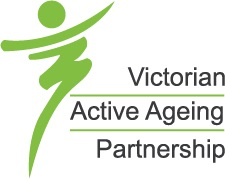
VAAP UPDATE
VAAP into Year Four
STAKEHOLDER SPOTLIGHT
A satisfied user of the VAAP Self-assessment Tool and Resources (SaTR) | Loddon and Mallee ‘Move It’ Partnership awarded Sports Australia grant | ‘Active Neighbourhoods for Older Australians’ project successful | Orienteering is a great opportunity for people of all ages and abilities | Great Getaways – Indoor Comfort, Outdoor Fun
RESEARCH UPDATE
Peer support to engage isolated older people in community activities | Engaging older people in the design of physical activity programs | Motivating inactive seniors to adhere to physical activity
STAY IN THE KNOW
A message from the Commissioner for Senior Victorians … Join me in Active April this year!
UPCOMING EVENTS
Warm water and chair-based exercise leader training | VAAP seminars coming to regional Victoria
VAAP Update
VAAP into Year Four 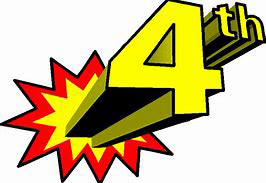
Commencing in October 2015, the Victorian Active Ageing Partnership (VAAP) is now into its fourth year. Over the last three years, the VAAP has been led by Musculoskeletal Australia in collaboration with Monash University and Fitness Australia. Staff from these organisations have made up the ‘VAAP Coordination Team’. Musculoskeletal Australia is delighted to now welcome Mr Tom Dixon, representing Vicsport, as a member of the VAAP Coordination Team in Year Four. Tom has represented Vicsport on the VAAP Project Advisory Group for the last three years and will strengthen the sports industry perspective in all project deliberations.
Within the priority areas governing the VAAP, the key initiatives in Year Four of the VAAP include:
Development of Partnerships
- Expanded membership of the VAAP Project Advisory Group to include Parks Victoria, Neighbourhood Houses and a representative from a Primary Health Network;
- Three editions of the VAAP eNewsletter;
- VAAP Research and Practice Forum to be held in October;
- Review of the literature and consultation with stakeholders resulting in the development of online resources to promote the development and maintenance of networks of, and partnerships between, service providers of physical activity opportunities for older people.
Development of workforce and organisational capacity
- Delivery of at least three U3A workshops aimed at dissemination of strategies and tools developed in Years 1-3 of the VAAP;
- Delivery of six regional workshops involving a diverse group of service providers aimed at dissemination of strategies and tools developed in Years 1-3 of the VAAP;
- Ongoing promotion of the VAAP SaTR;
- Mapping of the needs of the sports industry around the engagement of older people and physical activity.
Development of pathways for engagement of older people
- Development of resources for service providers of physical activity opportunities for older people about pre-exercise tools which promote tailoring, appropriate exercise;
- Development of resources for relevant service providers re: models and strategies to engage carers in physical activity;
- Preparation of an article for potential publication re: older people’s views on pre-exercise screening.
Stakeholder Spotlight
A satisfied user of the VAAP Self-assessment Tool and Resources (SaTR) 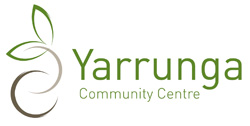
“You need to have a redesign, because familiarity breeds a kind of complacency.” Timothy White
Familiarity is comfortable, providing a sense of security and stability. It allows one to tackle new challenges in the knowledge that things are ticking over in the background without needing much of your time and attention. But for all the advantages that familiarity can bring, there are just as many disadvantages if you allow it to breed a sense of complacency.
Yarrunga Community Centre is based in Croydon Hills in Melbourne. Our mission is to respond to the educational, social and leisure needs of our local community in an inclusive environment. We have offered ‘Living Longer, Living Stronger’ classes since 2001 and remain very committed to working with our older community and responding to their changing needs.
We chose to use the VAAP Self-Assessment Tool and Resources (SaTR) as part of our ongoing program evaluation, and found it to be very valuable. It showed there are plenty of things we do really well. It also allowed us to look at what elements, although important, did not fit our business model; and areas where we could make marked improvements.
The areas for improvement were tackled first. They were not huge undertakings, but tightened up some quality control and compliance issues – very useful for management best practice. Other features not currently implemented were looked at in relation to our business, and what we could realistically do in regards to our resources and the expectations and preferences of our clients.
Then we returned to the things we did well. Seeing these ticked off gave us a sense of achievement in how we manage our ‘Living Longer, Living Stronger’ program, and confirmed the value of the program and our continued commitment to it. But it also gave us an opportunity to look at each element we did well, and see if there was further room for improvement – building even more on our strengths, rather than resting on our laurels.
This has resulted in some additional small changes, but already we are seeing results in improved client numbers, better relationships between staff and our new participants, and the flow-on effects of promoting other Centre activities. We have further refined the social and wellbeing aspects of our health/wellbeing classes that are so important for keeping older people engaged and included in community.
This article was submitted to the VAAP newsletter by Samantha Blackwell, Manager Yarrunga Community Centre.
Loddon and Mallee ‘Move It’ Partnership awarded Sports Australia grant 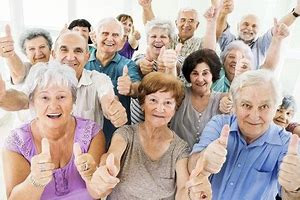
The Loddon and Mallee ‘Move It’ Partnership (Move It) is a systems-wide partnership approach across the Loddon and Mallee areas of the North Division, Department of Health and Human Services (DHHS).
Move It aims to increase the participation of people aged 65+ years in sport and active recreation by escalating existing opportunities, community awareness and suitability of sport and active recreation across the Loddon and Mallee areas. Move It will include a focus on the cohorts living in disadvantaged neighbourhoods and those who self-report feelings of social isolation through the DHHS Victorian Population Health Survey.
Move It partners include ten rural local governments, two sports assemblies, La Trobe University, five Primary Care Partnerships (PCPs), Council on the Ageing Victoria (COTA), Victorian Active Ageing Partnership (VAAP), two Primary Health Networks, State Government and local not-for-profit sport and recreation providers.
Move It may focus on sedentary behaviours defined as a group of behaviours typified by low energy expenditure, such as sitting, driving, watching television and other screen behaviours (Pate, O’Neill, & Lobelo, 2008). While the health risks associated with sedentary behaviour are similar to those associated with inactivity (increased risk of obesity, cardiovascular disease, and type 2 diabetes) (Proper, Singh, van Mechelen, & Chinapaw, 2011), they have been shown to be independent of physical activity (Healy et al., 2008).
Move It will implement activity at a local level such as: capacity building for local providers, a communication strategy about physical activity health and wellbeing benefits for older people, adaption of organised sports such as swimming, soccer, volleyball and active recreation such as strength training, water aerobics, dancing, yoga, cycling and walking.
For more information on Move It please contact Ms Rebecca Millard, Healthy Ageing Engagement Team Leader, Community Support Unit, Macedon Ranges Shire Council on phone 03 5422 0262 or email: rmillard@mrsc.vic.gov.au.
This article was submitted to the VAAP newsletter by Ms Clare Thurman, Senior Program Advisor, Active and Healthy Ageing, North Division Health, Department of Health and Human Services.
‘Active Neighbourhoods for Older Australians’ project successful 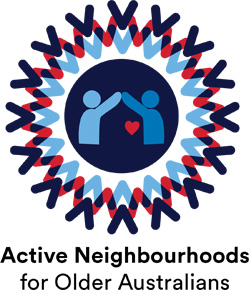
The ‘Active Neighbourhoods for Older Australians’ project will support the expansion of physical activity (PA) programs for older people in neighbourhood houses and centres across Australia through capacity building, partnership development, awareness raising and activation of peer support for program participants.
All neighbourhood houses and centres around Australia will have access to the capacity and capability-building components of the project and will also be able to apply for funding to assist in the expansion of their current age-appropriate programs or the establishment of new programs suitable for local older people. A self-determining, co-design approach will ensure the suitability and sustainability of these initiatives beyond the life of the current project.
Overall, the project will aim to achieve the following outcomes:
- Improved physical literacy and understanding of the benefits of regular PA among older people living in the areas served by the neighbourhood houses;
- Increased local availability of ongoing PA opportunities for inactive and high needs older people living in targeted local areas around Australia, which have been designed by local older people to meet their PA needs;
- Increased skills and knowledge for the provision of high quality PA opportunities to older people among the staff and volunteers of neighbourhood houses and the staff of relevant local organisations;
- Established partnerships and networks in the local areas of neighbourhood houses resulting in isolated older people being referred to the PA programs at the neighbourhood houses beyond the life of the current project;
- Improved physical activity, functioning, social connectedness and physical and mental wellbeing among older people attending PA programs offered through neighbourhood houses.
It is anticipated the funding application process for eligible neighbourhood houses and centres will open in early April.
This article was submitted to the VAAP newsletter by Gen Nolan, Programs Manager, Musculoskeletal Australia.
Orienteering is a great opportunity for people of all ages and abilities 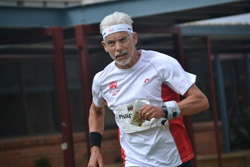
What is it?
Orienteering is an exciting and challenging outdoor sport that exercises mind and body. The aim is to navigate between control points marked on an orienteering map. In competitive orienteering the challenge is to complete the course in the quickest time choosing your own best route.
Who is it for?
Orienteering is a fulfilling sport for runners and walkers of all ages who want to test themselves mentally as well as physically, or who want to add variety to their leisure activities. It doesn’t matter how young, old or fit you are, as you can progress at your own pace on courses planned to suit you.
Where can you do it?
Orienteering can take place anywhere, from remote forest and countryside to urban areas, parks and school playgrounds. There are orienteering courses and events on your doorstep or further afield, helping you to discover new places.
Orienteering Victoria is the governing body for orienteering in Victoria and actively supports the many forms of this popular sport, enjoyed in a wide variety of locations across the State. Victorian Orienteering is celebrating its 50th anniversary. Today, there are over 500 members and 11 clubs in Victoria. 51% of orienteering members are 55+.
Orienteering is a fabulous sport for older people. There are age classifications and choice of course that you can participate in such as short, long, hard, easy. You can request a larger scale map. You can walk or run – or choose a bike or ski event! You can even choose your own time and take as long as you want on a permanent course.
Join a club and find interested people to help you start your orienteering experience. Fancy more involvement in the organisation and development of the sport? Volunteers are welcome and there is plenty to be involved in: event management, greeting newcomers, creating maps and courses, keeping data and statistics, coaching (all ages and levels), board and council membership…. bring yourself and your skills with you. You are welcome at orienteering!
Find out more about membership.
Talk to an orienteer: Rob Fell 0428 358 588
Receive a weekly email of events: sign up by emailing editor@vicorienteering.asn.au
This article was submitted to the VAAP newsletter by Kate Morris, Projects Coordinator, Orienteering Victoria.
Great Getaways – Indoor Comfort, Outdoor Fun 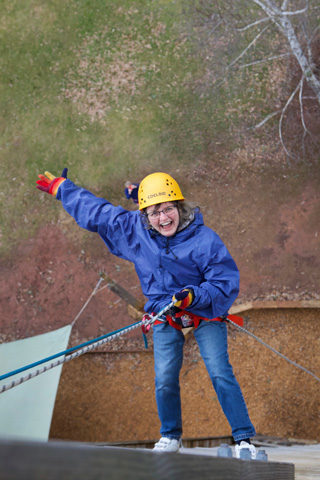
The Australian Camps Association (ACA) has partnered with fully accredited Victorian camps to develop the Great Getaways (residential camps for people over the age of 55). Each venue is chosen for its ability to deliver excellent programs for older people (i.e. a range of appropriate activities, staff who can facilitate an older group), comfortable shared accommodation (no top bunks, bathrooms under the same roof), great catering and with strong local community connections.
The goal of each Great Getaway is to encourage not only increased activity during the camp, but lasting behavioural changes that supported remaining active post-camp.
The ACA was initially funded by the Victorian Government to carry out research into the motivations of, and benefits to, older Australians attending camp. This research was carried out through a range of focus groups and pilot camps during 2017-2018 and was overseen by Dr Liz Cyarto from the National Ageing Research Institute. When asked what they hoped to achieve during their Great Getaway, participants reported that they wanted to meet new people, spend time with ‘like‐minded’ people, have new experiences, be outdoors, improve their fitness / health and (importantly) have positive experiences to reflect on.
Post-camp evaluations consistently show that there was a range of beneficial outcomes experienced by Great Getaway campers, including:
- Feeling more confident in their abilities and being more willing to try new things and challenge themselves;
- Dedicated camps tailored for older adults make an important contribution to camper’s health and wellbeing;
- An unexpected finding was that a segment of older adults want to experience high
intensity, physically challenging activities; - Many people formed new friends during their camp and have continued with these friendships post-camp.
The ACA believes that by combining the benefits of social connection, time in natural environments and increased physical activity/challenge, joining in with a Great Getaway can make a real difference to people’s quality of life as they age.
The Great Getaway program is now firmly established and more details can be found at http://www.auscamps.asn.au/camps-activities/camps-over-55s or search Facebook The Great Getaway.
This article was submitted to the VAAP newsletter by Pete Griffiths, CEO, Australian Camps Association; email: ceo@auscamps.asn.au
Research Update
Peer support to engage isolated older people in community activities
Decades of health research has shown that social relationships are integral to health status, and have an impact upon longevity similar to that of smoking and even greater than physical inactivity and obesity. Enlisting peer volunteers has been found to be an effective strategy for improving social connectedness and mental well-being among isolated people in the community. However, there are few reported instances where this approach has been used to link older people to organised physical activity opportunities in their locality. The ACE (Active, Connected, Engaged) study investigated the feasibility, acceptability and impact of using peer volunteers to promote active ageing among socially disengaged, inactive older adults.
The study was undertaken as a randomised controlled trial in two wards in Bristol, United Kingdom, over six months. Participants (n=39) were sedentary and aged 65 years and older, recruited through mailed invitation letters, letterbox drops, posters in local venues, and referral from community groups. Each was randomised to receive either one-to-one peer support or written information about local activity programs. Peer support was provided by volunteers who were 60 years and older, had good mobility and communication skills, and had undergone a two-day training course. Peer supporters had two initial meetings to get to know their assigned participant, review potential activities, and address barriers to participation. They then undertook at least three visits with the participant to local programs, and provided further support by telephone and at least two further joint visits.
The results showed that older participants who received peer support undertook more out-of-home activities after six months. These participants also reported increased social support, competence, autonomy and social well-being. It was found that peer volunteers, while sufficiently active at baseline, increased their physical activity. The ACE intervention was well accepted and easy to deliver.
The complete article can be viewed at: Stathi A, Withall J, Thompson JL, Davis MG, Gray S, De Koning J, Parkhurst G, Lloyd L, Greaves C, Laventure R, Fox KR. Feasibility trial evaluation of a peer volunteering active aging intervention: ACE (Active, Connected, Engaged). The Gerontologist. 2019 Feb 19. Available at: https://academic.oup.com/gerontologist/advance-article/doi/10.1093/geront/gnz003/5342922
Engaging older people in the design of physical activity programs
The participation of older people in physical activity programs is enhanced when the exercises undertaken have been adapted to meet their interests and capabilities. However, in the group environment there is often older people of diverse abilities and, with one leader, there are limits to the extent that exercises can be individually tailored. Working with participants to identify suitable exercises that they can undertake independently, at home, may be a valuable way of supplementing what they do in classes. The study reported in this article investigated the feasibility of assisting older people to self-select and manage falls prevention exercises with guidance from a digital program (via computer, smartphone or tablet), or a written booklet.
The study was conducted in Umea, Sweden, and entailed semi-structured interviews with 28 out of 67 older people who were instructed in the use of digital or booklet-based exercise self-management programs. Participants were all aged 70 years and over and had self-reported balance impairments. They could volunteer for the digital or booklet-based programs, and 29 of the 67 chose the former. Both self-management guides were based on the Otago home exercise program, but the digital program integrated more difficult and easier exercises, and included behaviour change support. Participants were given an introductory education session, and then asked to design their own exercise program that they would carry out for at least 30 minutes, three days a week, at home. Support was available via telephone through the program.
Participants were capable of putting together programs from a repository of evidence-based strength and balance exercises, and appreciated being able to make choices based on their own preferences and circumstances and to modify their programs when they wished. Users of the digital program appreciated the wider variety of exercises, and found that being able to watch videos with accompanying verbal instructions helped them to memorise the activities and integrate them into their lives. Some reported that the instructions given in the booklets were unclear and indicated that more guidance would have been helpful.
The full report of this study is provided at: Pettersson B, Wiklund M, Janols R, Lindgren H, Lundin-Olsson L, Skelton DA, Sandlund M. ‘Managing pieces of a personal puzzle—Older people’s experiences of self-management falls prevention exercise guided by a digital program or a booklet’. BMC Geriatrics. 2019 Dec;19(1):43. Available at: https://bmcgeriatr.biomedcentral.com/articles/10.1186/s12877-019-1063-9
Motivating inactive seniors to adhere to physical activity
Qualitative research carried out in VAAP has revealed that creating inclusive and welcoming environments in physical activity groups is a valuable role that leaders play, especially for older adults who come from backgrounds of social disadvantage and isolation. The study reported in this article developed and evaluated a structured social support strategy embedded within a regular physical activity program, and evaluated its impact upon program adherence and overall physical activity.
The study was conducted in a residential housing facility in Israel, and used a randomised controlled trial design. There was 39 sedentary older adults enrolled, 35 of whom were women, with a mean age of 84.5 years. All were invited to take part in a nine-week physical activity program that was conducted over two 45-minute sessions per week, and included a mix of strength, balance, and flexibility exercises. Half of the enrolled participants received a supplementary social support intervention that comprised:
- Five minute social times prior to three of the classes, when they could meet others and share common interests;
- 15-20 minute group meetings on alternate weeks to discuss physical activity barriers and motivators, suggest role models, and build relationships;
- Group discussions during scheduled breaks in classes, when participants could discuss their problems and ask the leader questions; and,
- Distribution of contact lists so that participants could call other group members to converse and make arrangements to attend classes together.
The mean attendance at classes among those receiving the supplementary social support intervention was 70%, over twice that of participants who took part in the regular physical activity classes only. About two-thirds of participants receiving social support stayed in contact with other group members, compare to none of those in the regular classes. While loss to follow-up hindered comparison of the total physical activity between participants in the two arms of the study, it appeared that this was also higher among older adults who received the social support intervention.
The full article can be found at: Cohen-Mansfield J, Sommerstein M. ‘Motivating inactive seniors to participate in physical activity: a pilot RCT’. American Journal of Health Behavior. 2019; 43:195-206. Access to the article may depend on your institutional rights.
Stay in the Know
A message from the Commissioner for Senior Victorians … Join me in Active April this year! 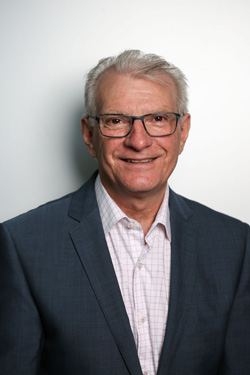
One of the most important things we can do as we age is be as healthy as possible. Anything we can do to make this fun and easy is great in my book! That’s why I’d like to invite you all to join me in participating in Active April this year.
The Premier’s Active April encourages all Victorians to do 30 minutes of physical activity a day during April. It’s free, fun and part of the Victorian Government’s commitment to get more people moving. If you sign up, you’ll get access online to free fitness support, discounts, and special offers. There are also some great prizes to be won. Many of you already participate in, or support, things that keep you and your communities active and feeling healthier. The types of activities that can be logged are many and varied – gardening, walking, lawn bowls and more.
Why not join up with me? Or create a team for people in your community? A bit of healthy competition perhaps! If you have activities or events that are open to others, you can also add them to the Active April website. Just click ‘Add Event’ on the ‘My Local’ tab.
Keen to get involved? Visit www.activeapril.vic.gov.au and click ’Register Today’. Start small if you like and remember every little bit counts!
I’ll be posting on my social media page about my Active April experiences. Share your videos, photos and comments with me on @SeniorVicCommissioner. Use the hashtags #ActiveApril and #GetActivewiththeCommish
This article was submitted to the VAAP newsletter by Mr Gerard Mansour, Commisssioner for Senior Victorians and Ambassador for the Prevention of Elder Abuse.














